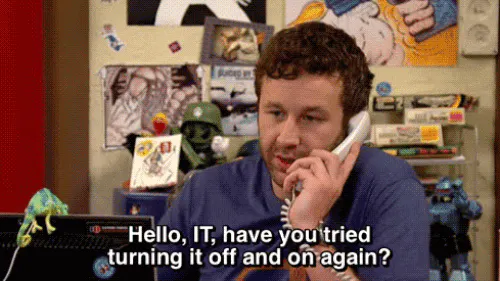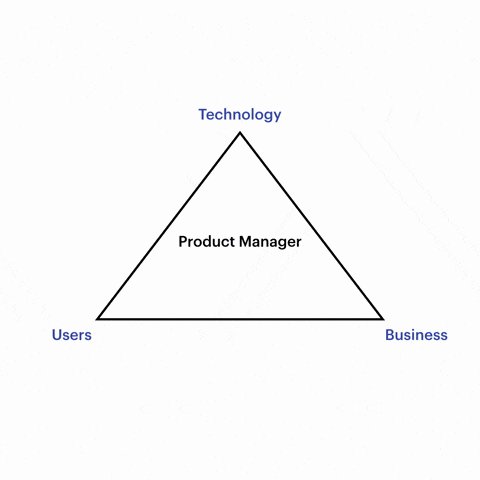Here’s what I wish I’d known before becoming the first product manager of a young bank for professionals.
Be confident
The amount of information that you don’t have is so vast that no one is expecting you to know everything. You’re not here to have all the answers, but to ask the right questions. Be humble in the face of complexity, but don’t let it overwhelm you. You are supposed to be the team confidence catalyst, not a purveyor of anxiety. Do your best, communicate openly, and you will get there in the end.
Define the product vision
- To help you get started, take the time to find a framework that works for you: it’s not a natural process, and it requires a lot of thinking. However, when you get this part right, it truly pays off in terms of your ability to move forward quickly and with confidence (see previous entry).
- Talk to people. Meet potential customers, including both users and stakeholders as they are not necessarily the same person. For us, CEOs will be contract signatories, but their assistants may be our product users. We also built 2 Typeforms (one for business owners and one for bankers) to help us obtain market data and conduct interviews.
- Understand the company strategy. Speak with founders, read the business plan and get involved in strategic discussions. The more you make the company’s strategy your own, the better you’ll be able to translate it into concrete objectives for the various teams.
Learning to walk before running
Help people and find small ways to improve their daily lives: find the right tools, implement new processes (shorter and more efficient meetings are actually a process), share information, provide training if needed. Repeat as many times as necessary. For instance, we are working with a freelance designer and we were having trouble sharing the latest designs with the rest of the team. To remedy this, we set up Abstract, a collaborative design tool. Now everyone can contribute to the design process.
As I mentioned earlier, we have people coming from different backgrounds (mostly banking and tech) who have very different opinions on meetings. Needless to say, they have different views on the usefulness of meetings. As a gross generalization, I would say that tech people don’t like meetings and banking people are used to spending a fair amount of time in long meetings. It’s a real challenge to find the right balance between both. In a blog article, the teams at Alan propose an interesting alternative to meetings: the written note.
Don’t be afraid to spend time learning. In our case, we spent a couple of months building a prototype just to get our hands dirty. At first, the team was very reluctant to do this, but in the end it turned to be a great way to learn to work with each other and to start understanding how to build all our product stacks. An unexpected upside was the number of inside jokes that resulted from this exercise; those involved still have a good laugh about it today.
Build your roadmap
A few tips to get you off to a good start:
- Focus on the essentials. Keep in mind that you don’t have to reinvent the wheel to succeed – and no one will blame you if you don’t. Doing the same thing better is often enough to make a difference. In our case, the amount of resources (time and tech) required to reach feature parity with competitors is so high that it became a question of radical prioritization (which means saying goodbye, at least for now, to some of our favorite features). In order to be able to design our roadmap in this context of limited resources, we were forced to choose between two radically different MVPs. Inevitably, this led to long debates. In the end, however, the team was aligned with a precise objective, which in turn enabled us to start working on our MVP features.
- Sit down with every stakeholder to make sure that you didn’t forget anything.
- Get estimates from your tech team. Involve them in designing the roadmap as soon as possible, to avoid friction later (whether on a technical or an interpersonal front).
- Make room for last minute adjustments: start with key features and schedule every nice-to-have feature closer to the deadline.
- Once your roadmap is created, share it and update it frequently. Product Board is a good tool for that.
- Create tangible delivery objectives. And regularly demonstrate what you’ve been working on to other employees.
Short-term focus on long-term needs
We are building a bank, a real independent bank. Therefore, we approach everything we do as an industrial project, which requires us to look beyond the end of the current month. If we do not adequately consider a topic today, we will pay the price tomorrow, or the day after tomorrow. Therefore, we always choose quality, even if a passable solution could have sufficed in the short term and at a lower cost. We opt for the most demanding path, not only in terms of product, but also in terms of internal procedures and tools.
For example, we seek to avoid dependencies and intermediaries as much as possible, to remain masters of our infrastructure. This choice is not free, indeed, but it has pushed us to invest time in developing a technical architecture as exotic as it is promising.
It’s almost pointless to remind, but the choice of quality comes at the expense of speed. Favoring one means turning away from the other. Nevertheless, we consider our bias towards quality as a long-term investment whose dividends we will reap later on. When the time comes to scale our operations, we will be able to accelerate rapidly and confidently.









